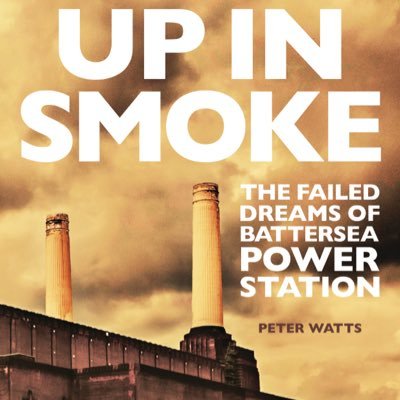The reopening of Battersea Power Station last week drew a lot of publicity, much of which summarised the contents of Up In Smoke, my book on the power station, while sanitising most of the politics.
The reason I wrote the book was because I felt that much of what has happened to modern London – indeed, modern England – could be located within the bricks of the power station.

Battersea was always a symbol of prevailing trends and it still is today – from industrial powerhouse to decrepit ruin, reimagined as a retail experience for the ultra wealthy. Here is a landmark piece of British architecture on a patch of prime central London once owned by the British state but sold for a pittance to chaotic private enterprise only to end up in the hands of another country’s state pension fund.

If that doesn’t highlight the relationship between the short-sightedness and failure of imagination of privatisation and our current economic situation, where just about every British asset seems to be owned by other countries, I’m not sure what does.
When writing the book, I found one of the most honest interviews to be with Sir David Roche, the power station’s overlooked first developer. Sir David came on the scene in 1983 after a distant relative saw a competition in the Times inviting applicants with ideas to redevelop the power station. Roche’s relative, an architect, wanted to build a science-theme park but Roche went along with it but privately thought that was a daft idea.
“To me,” he said. “It was a shopping centre.”
Roche’s secret plan was to come up with a design that had a few rides in prominent places in and around the power station, while filling most of the space with shops. “We’d win the competition on the basis it was a theme park as that is jolly nice and makes people comfortable and exciting. But to make money it had to be a retail destination.”
As cynical as he was, Roche has proved to be completely correct, it’s just taken 40 years for everybody to admit it. The problem at the time was that Tory-controlled Wandsworth didn’t want to build shops because they didn’t want to threaten Clapham Junction town centre, just as they didn’t want to build houses because they didn’t think people would buy them. The fact there was no other viable use of the power station – an art gallery is a lovely idea but it’s too damn big – meant developers were forced to conceive completely unpractical uses for decades. That only changed when Wandsworth admitted that okay, maybe shops and houses were a good idea after all – but only for really rich people. By then, most of the developers either went bankrupt or sold to people who would eventually go bankrupt.
Roche was one of the latter. To make the theme park idea work he needed somebody with experience and brought on board John Broome, the owner of Alton Towers. Broome was even more cynical than Roche and outmaneuvered his rival to take control of the consortium, paying Roche a tidy sum to walk away – before going bankrupt trying to achieve the impossible.
That made Roche the first of several developers to pocket a tidy profit without have done all that much to earn it.
“It was mega bullshit by lots of people including me,” he admitted quite cheerfully. “But the problem with bullshit is it can sometimes work but when it doesn’t the whole thing falls apart.”
Welcome to Britain 2022. We hope you enjoy your stay.























